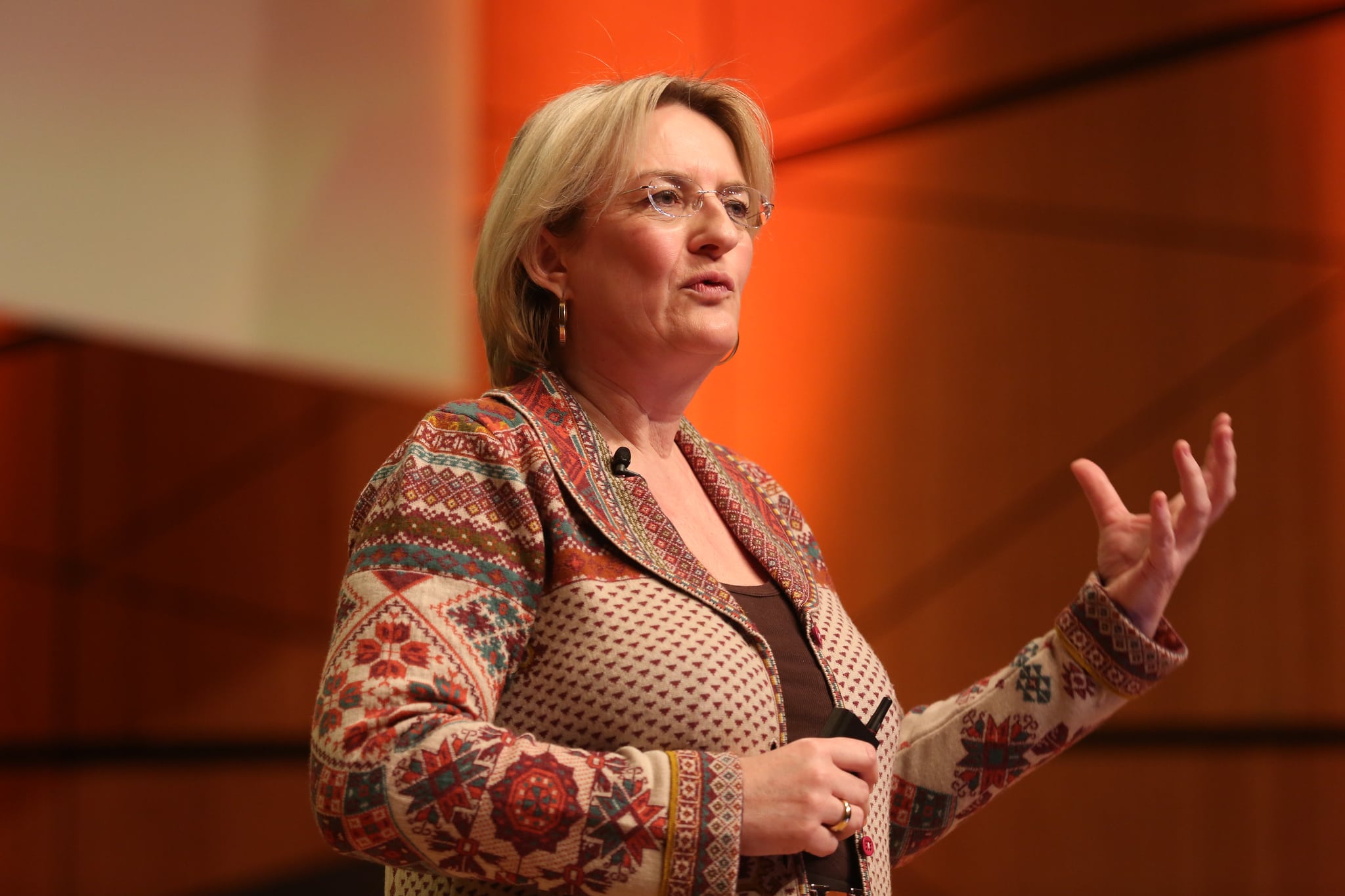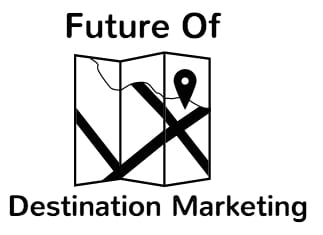Skift Take
Rather than push tourists away, Germany's complicated history - and more recent revitalization - is what draws them in. It's the tourism board's challenge to make sure Berlin and Munich aren't the only places that benefit.
Editor’s Note: Skift is publishing a series of interviews with CEOs of destination marketing organizations where we discuss the future of their organizations and the evolving strategies for attracting visitors. Read all the interviews as they come out here.
This continues our series of CEO interviews that began with online travel CEOs in Future of Travel Booking (now an e-book), and continued with hotel CEOs in the Future of the Guest Experience series (which is also an e-book).
The German tourism industry is celebrating this week. That’s because tourism officials announced that international travel to Germany reached a record high in 2014 for a fifth consecutive year, for a total of 75.6 million foreign tourists. Although Europe continues to be the country’s largest source market — accounting for 75 percent of visit — there is considerable growth coming from the Arab Gulf states, China, and the United States.
The German tourism market continues to grow thanks to a combination of traditional attractions as well as its growing reputation as an international arts and youth hub. Berlin, as well as smaller cities such as Leipzig, are gaining reputations as welcoming enclaves for young people, attracting a younger demographic than Germany enticed to visit in the past.
The country is now looking to capitalize on its continued growth by drawing repeat visitors to lesser-known regions outside of major cities. The German Travel Market, where press, buyers and suppliers converge for activities and networking, just wrapped up in Thuringia. This is one such region that the national tourism board hopes to help promote through themed campaigns and increased exposure.
Skift recently spoke with Petra Hedorfer, the CEO of the German National Tourism Board, about marketing trends, Berlin’s rise, and plans for continued growth.
Skift: Berlin has become one of the more popular and talked about destinations in the world. How do you move tourists out of Berlin into lesser-known regions like Erfurt and Thuringia?
Petra Hedorfer: We focus on thematic campaigns that highlight regions across Germany, including some regions that may not have the resources to do so themselves.
In 2015, our annual theme is “Traditions & Customs,” where we heavily focus on regional diversity as it pertains to culinary, living tradition, and arts and crafts. As part of this campaign, we’ll highlight the Onion Fair in the Thuringian city of Weimar, East Frisian tea ceremonies, or the beautiful tradition of handmade Christmas ornaments in Saxony’s Ore Mountains.
In 2016, we are marketing nature vacations in Germany, including 16 national parks, 15 UNESCO biospheres and 104 nature parks in regions across the country.
Skift: How is the German National Tourism Board working with businesses to cater to Chinese and Brazilian tourists?
We have offices in both Brazil and China, where we apply our multiplier strategy, working closely with the local trade and media as well as reaching out directly to consumers. We find that consumers in both these markets are very Internet savvy so we approach them via online and traditional campaigns.
Skift: German travelers are among the most adventurous in the world and are often found in some of the least-visited destinations. Why is this and how do you empower residents to become tourism ambassadors to attract more tourism?
Hedorfer: We’re not the only world champions in travel. Chinese travelers are also found all around the globe. We used to be the most important traveler for many destinations, but encouraging Germans to stay home has been an important campaign for many years.
I believe that social media makes us all ambassadors for our country. I hope we are convinced of the beauty of our country and there is still potential to tap. We asked young students to talk about Germany, to share the best cafes and hotspots, and to provide user-generate content.
Skift: Is the demographic of Germany’s visitors evolving? What’s driving these changes?
Hedorfer: The profile of international visitors to Germany changes constantly but in small steps.
While the average age of visitors to Germany from European countries has stayed almost the same (42.4 years old in 2014 vs. 42.2 years old in 2013), the big growth in visitor numbers is seeing mostly amongst the younger visitors (15-34 years old grew 10.8 percent) and older visitors (55+ years old grew 15.1 percent). The number of “middle aged” visitors is stagnant.
There are several reasons for this. For example, we are seeing big increases in growth from markets with young travelers such as Asian countries as well as Eastern and Southeastern European markets.
The USA, which remains the biggest overseas market for Destination Germany, continues to grow strongly, breaking the 5 million mark for overnight stays for the first time ever in 2014. Stays increased 5 percent to reach 5.2 million.
American visitors are becoming younger and more diverse. The age of the average American visitor went from 48 years old in 2010 to 41 years old in 2014 and the percentage of female travelers grew from 43 percent to 55 percent.
Skift: What destination marketing trends are you seeing across the sector?
Hedorfer: We find that more and more travelers rely on information from non-traditional outlets such as bloggers and social media influencers. We are putting a heavy emphasis on working with these groups in order to reach consumers via blogs and social media channels.
This ties in directly with the increase in the use of mobile devices such as smartphones and tablets. When redesigning our website a few years ago, we made sure it would be mobile optimized. The online sphere tends to move much faster, work with more bite-sized information, and is more casual than traditional print outlets. We’re also seeing a more visual approach with video bloggers and beautiful images becoming more and more important.
Skift: What are the most important marketing platforms that the German Tourist Board uses today?
Hedorfer: Our most important platform is our website www.germany.travel. As part of our “owned media,” we heavily utilize our social media channels, including Twitter, Facebook, Instagram, and YouTube.
We strive to enhance our newer digital channels while keeping more traditional channels an integral part of the marketing mix. We focus on working with multipliers – press and trade – who vastly extend our reach to the consumer via their own platforms.
Skift: Do you have a relationship with consumers beyond getting them into Germany? How do you interact and inform them once there are in the destination?
Hedorfer: We accompany our visitors during their whole customer journey. We provide inspiration and ideas, support them in their planning and organization, and offer various feedback tools. For example, we have apps such as for our UNESCO World Heritage Routes and Top 100 sights that help travelers discover the country while they are there. We interact with travelers via social media, repost their pictures on Instagram, and answer questions on Twitter.
Skift: Destinations consistently struggle with funding. Do you see this changing in the next five to 10 years?
A large amount of our budget comes from public funding. We watch very closely that these funds are used efficiently. We have a very successful model of public-private partnership. Thanks to the funds contributed by our 72 members and by acquiring additional funds for marketing initiatives, we are able to extend the reach of our activities.
Our performance is highly successful: The tourism industry contributes more to the German GDP (4.4%) than the automobile industry (4.3%) and construction (2.3%). In 2014, we recorded the 5th consecutive year with more than 75 million overnights. Accordingly, federal funding has increased regularly in the last few years. This year alone, the German National Tourist Board received an additional 2 million euros in budget to invest in emerging markets.
Skift: If you have 10 times more funding, what would you do with it?
Hedorfer: We would love to focus more on B2C campaigns, including multi-channeling and cross-media marketing, really strengthening the Destination Germany brand in the eye of the consumer. We would also love to intensify our marketing activities in emerging destinations, such as Southeast Asia and South America.
The Daily Newsletter
Our daily coverage of the global travel industry. Written by editors and analysts from across Skift’s brands.
Have a confidential tip for Skift? Get in touch
Tags: berlin, ceo interviews, fodm, germany, munich, tourism
Photo credit: Petra Hedorfer is the CEO of the National German Tourism Board. German Convention Bureau / Flickr

